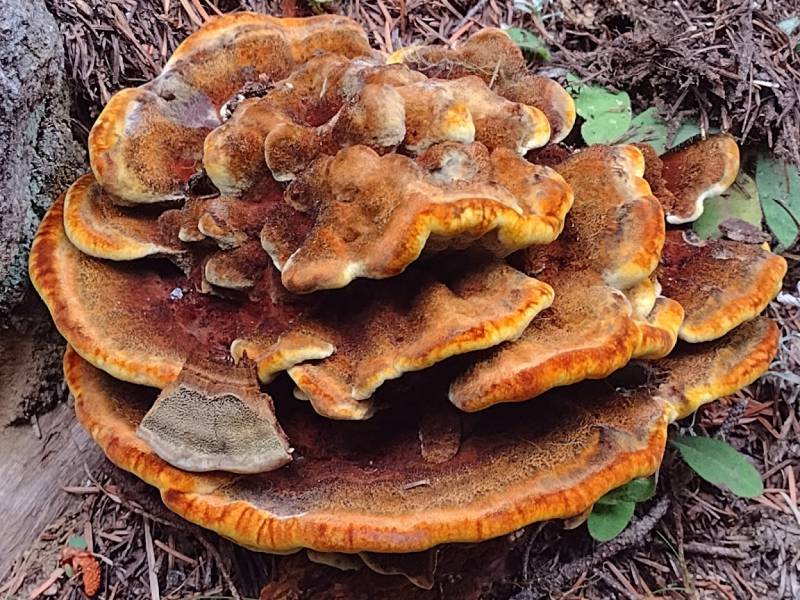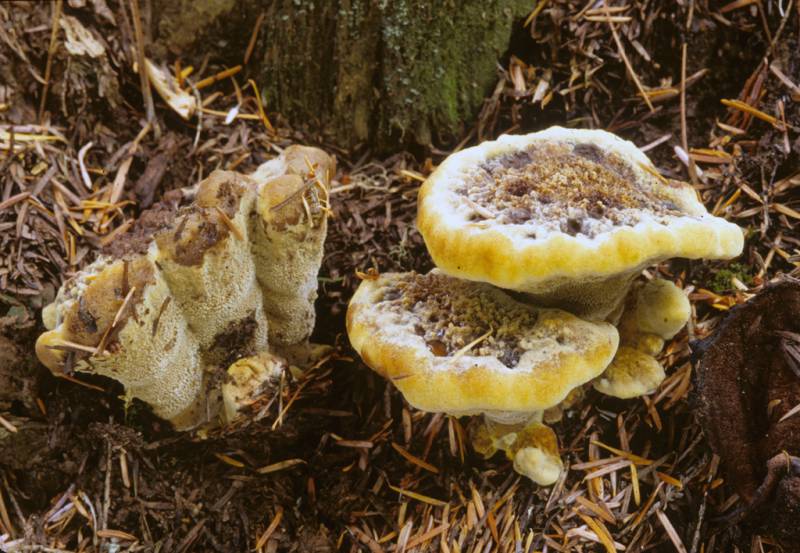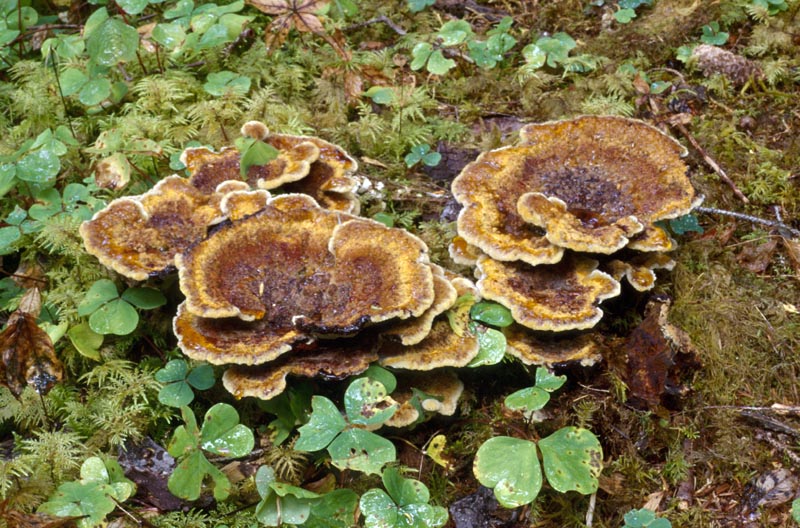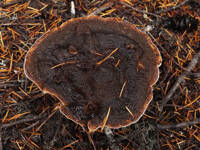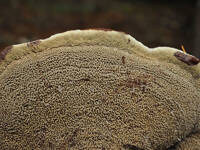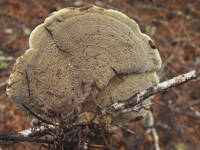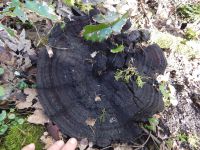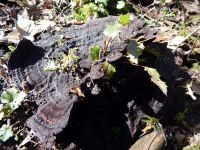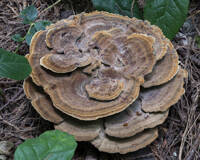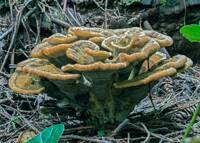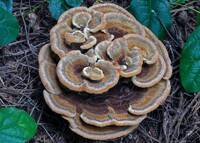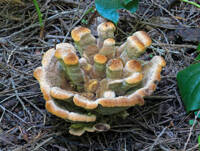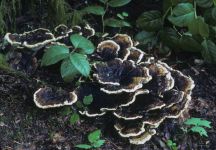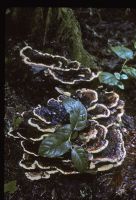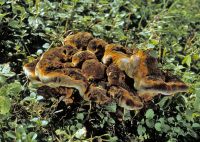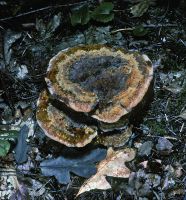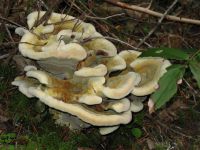Habitat: Terrestrial, at the root of living conifers
Conservation Status: Not of concern
The fruitbodies usually are terrestrial, forming one or more circular to irregularly shaped caps from a short, thick stipe, or with several caps forming a rosette; occasionally, it forms shelf-like fruitbodies on the sides of stumps and snags. The upper surface is tomentose to hairy, sometimes zonate, light yellowish brown to brownish orange near the margin and deep to dark brown toward the center, often with a pale edge when growing. The pores are circular to angular or labyrinthine, and become tooth-like in age. When fresh, they are greenish, yellowish, or orange tinted and bruise brown, then become grayish to brownish in age. The yellowish brown to reddish brown flesh is soft and watery at first, then dry and brittle with age. P. schweinitzii is often used for dyeing wool. It yields an array of earth-tones, the exact colors varying greatly with the age of the fruitbody.
PNW Herbaria: Specimen records of Phaeolus schweinitzii in the Consortium of Pacific Northwest Herbaria database
CalPhotos: Phaeolus schweinitzii photos

